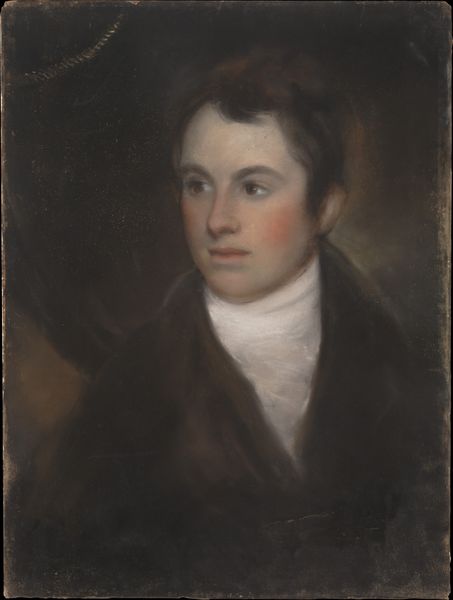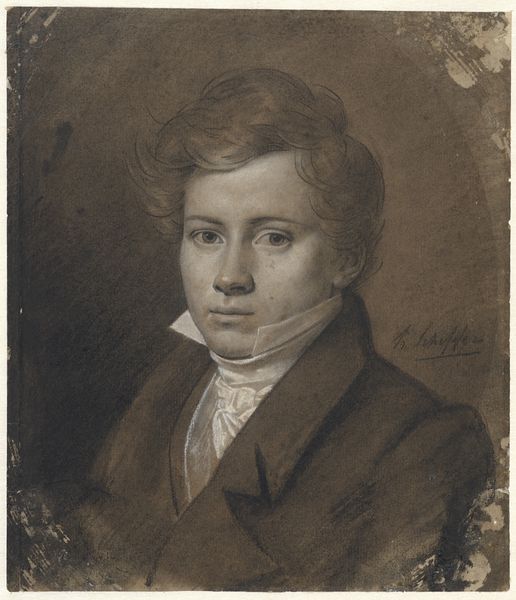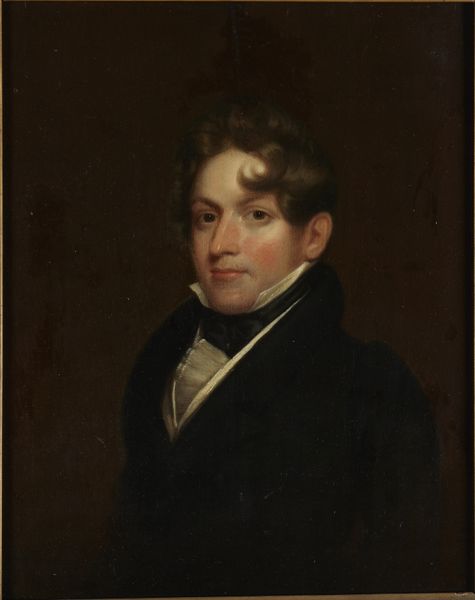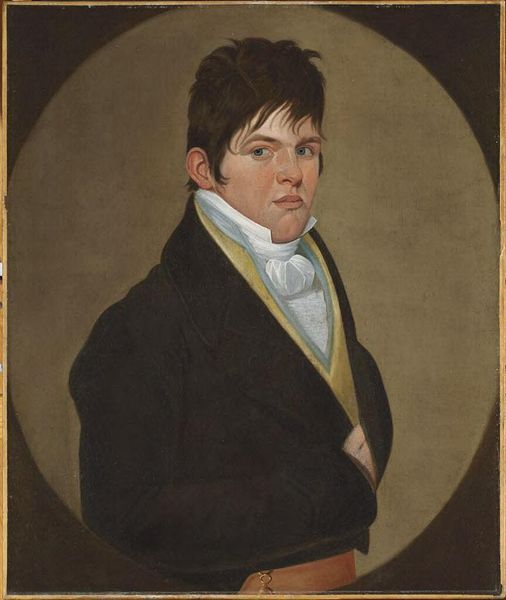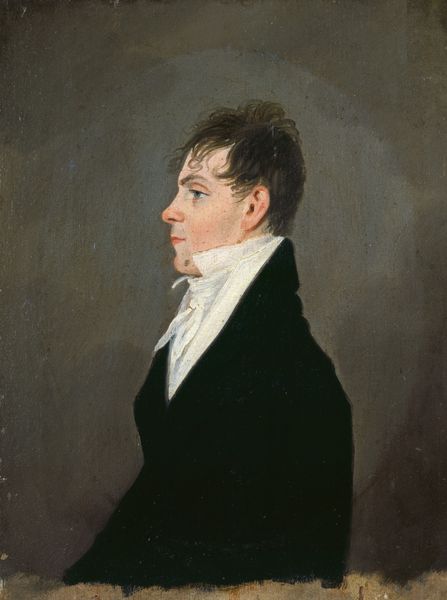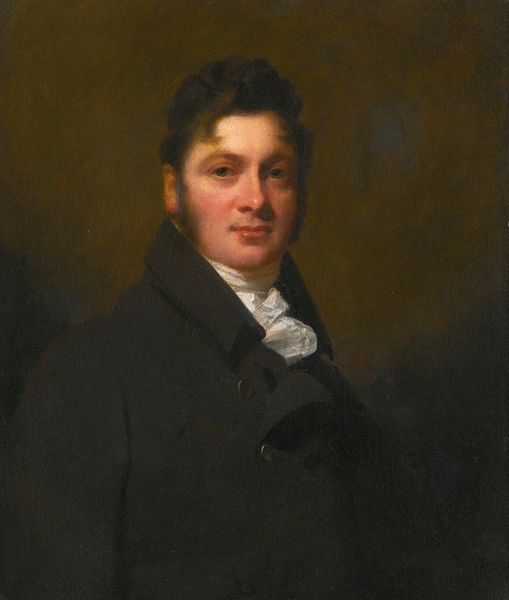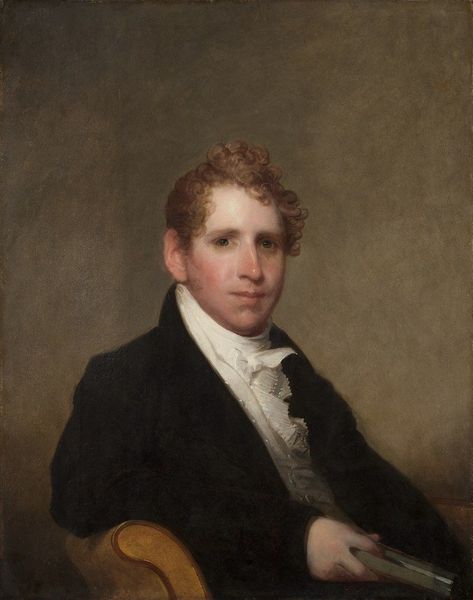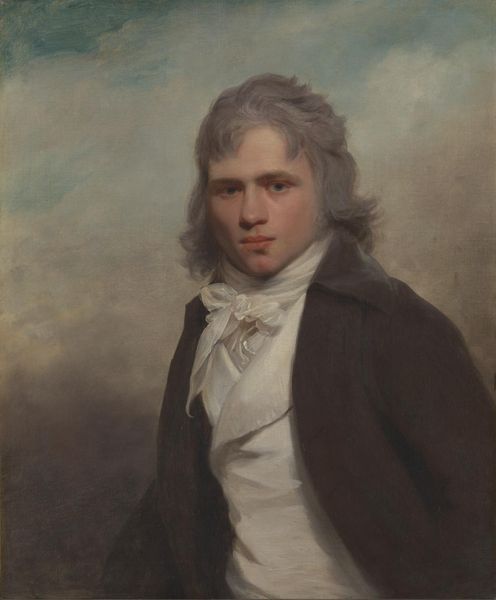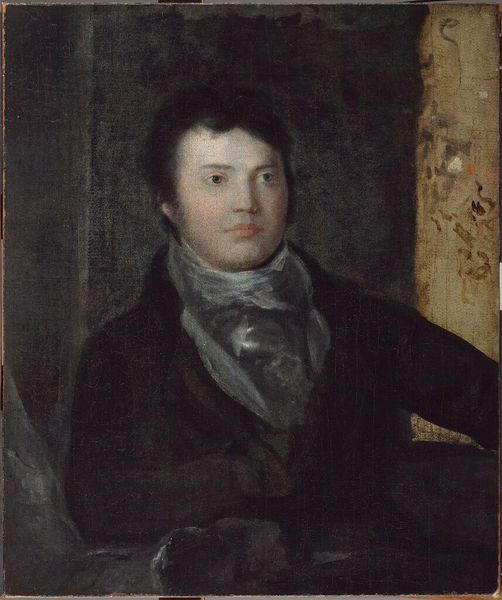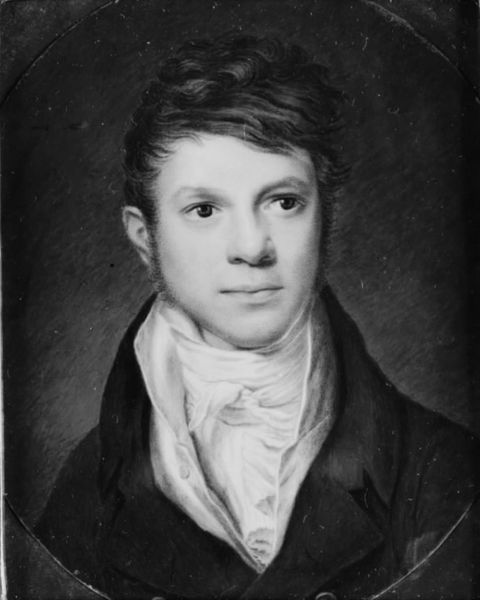
Portrait of Laurens de Witte van Citters (1781-1862). Father of Jonkheer J. de Witte van Citters, testator of a series of Family portraits to the Museum c. 1815
0:00
0:00
painting, oil-paint
#
portrait
#
portrait image
#
painting
#
oil-paint
#
portrait reference
#
portrait head and shoulder
#
romanticism
#
animal drawing portrait
#
portrait drawing
#
genre-painting
#
facial portrait
#
portrait art
#
fine art portrait
#
celebrity portrait
#
digital portrait
Dimensions: height 22 cm, width 18.1 cm, thickness 1.4 cm, depth 7.2 cm
Copyright: Rijks Museum: Open Domain
This is an early 19th century portrait of Laurens de Witte van Citters, painted by an anonymous artist in the Netherlands. Its presence here results from a bequest – a very particular and important means by which artworks and family history enter the public sphere. The painting gives us some clues about the sitter’s social standing. His dark jacket, neatly styled hair, and the carefully rendered white cravat are all visual indicators of wealth and status. The fact that the family felt it necessary to commission this portrait tells us something about the importance of lineage and representation in Dutch society at this time. It’s likely that this portrait hung in a family home for generations, a private symbol of the family’s identity. Historians use portraits like this as a way to understand the social values and structures of the past. By researching the De Witte van Citters family and the context in which they lived, we can better understand the role of wealth, status, and family identity in 19th-century Netherlands. The history of this painting and how it ended up in the museum is part of that story.
Comments
No comments
Be the first to comment and join the conversation on the ultimate creative platform.
